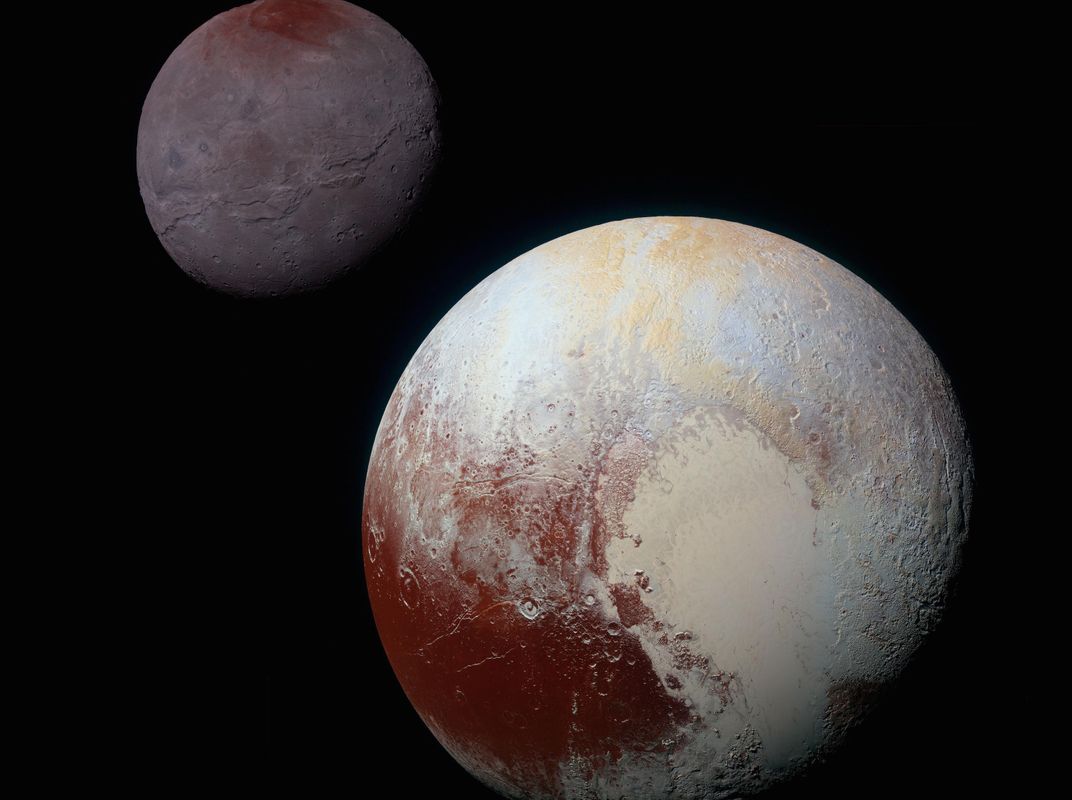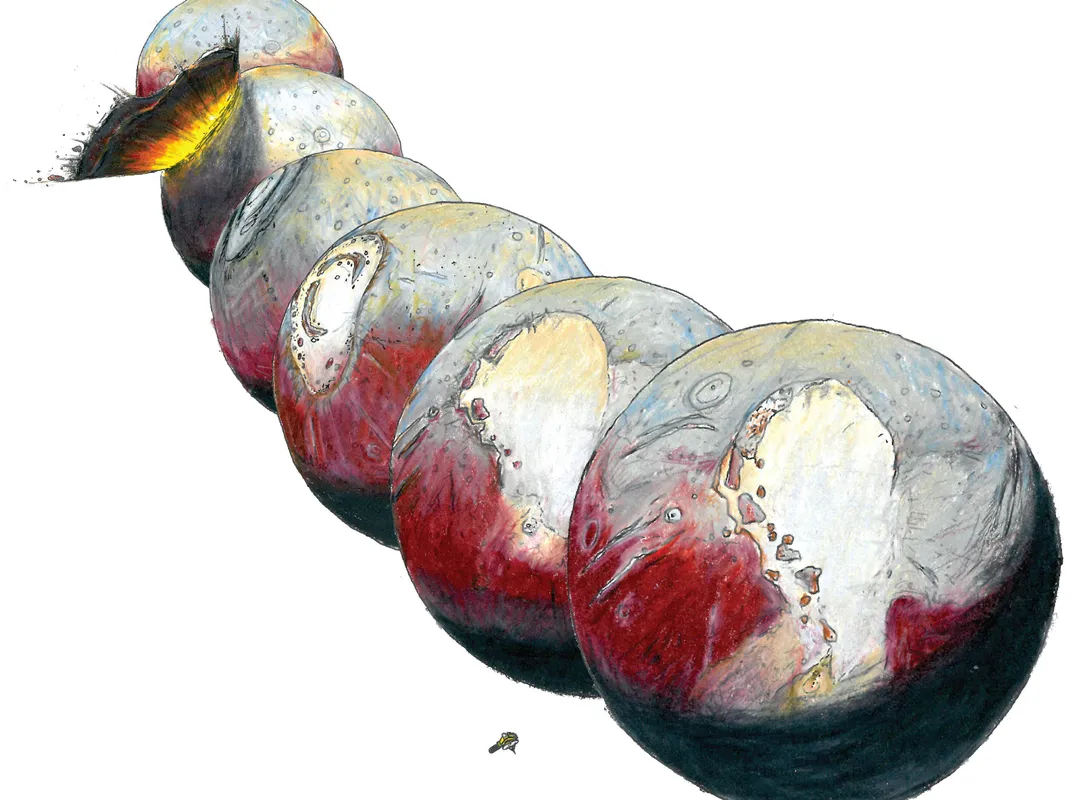How the Pull of an Icy “Heart” Sent Pluto’s Poles Wandering
Using New Horizons data, scientists determine that the erstwhile planet has a more dynamic past than we thought
/https://tf-cmsv2-smithsonianmag-media.s3.amazonaws.com/filer/4b/35/4b35cc34-9145-4849-95c7-a13ebd4f0193/nh-pluto_cropjpg_copy.jpg)
Pluto tends to get a reputation for being a frozen, changeless wasteland. But it now seems that an ice-filled basin on the dwarf planet's surface could actually control the rotation of the entire dwarf planet, according to two new studies published today in the journal Nature. The research sheds light on the surprisingly turbulent geography of the erstwhile planet.
Sputnik Planitia is one half of the heart-shaped Tombaugh Regio, a brightly visible region named for the American astronomer who discovered Pluto, Clyde Tombaugh. The basin’s 325,000 square miles are filled with nitrogen frozen solid thanks to Pluto’s average temperature of -391 degrees Fahrenheit. However, there is more to Sputnik Planitia than meets the eye: The flat, featureless basin is actually a large “mass anomaly” that has shifted Pluto’s rotation by roughly 60 degrees over the course of millions of years, scientists report in the first of the new studies.
“It would be like if you stuck a bunch of quarters on the side of a frisbee,” says James Keane, a planetary scientist at the University of Arizona and lead author of the study, describing Sputnik Planitia’s effect on Pluto. As a large mass stuck to the dwarf planet’s surface, the basin destabilized Pluto’s rotations much like extra weight on a spinning frisbee would. This process, called “true polar wander,” has reoriented Pluto so the dwarf planet’s rotation can once again achieve stability.
That reorientation has caused Sputnik Planitia to reside directly opposite Pluto from its moon Charon, the other major mass affecting the dwarf planet’s rotation.

This new understanding of Pluto's gelogy was made possible by detailed data taken by NASA's New Horizons satellite flyby last year. Keane and his co-authors' studied the faults and cracks on Pluto’s surface to hypothesize that, as Pluto’s spin shifted from the extra weight of Sputnik Planitia, inertia likely pulled on the dwarf planet’s surface, cracking it. To test this theory, Keane ran computer models that included true polar wander. The models produced cracking patterns that closely match what New Horizons saw on Pluto’s surface.
“It’s almost like you’re trying to move the bulge on an egg,” Keane said. “It’s going to cause cracks.”
"This is a pretty strong case that true polar wander really did occur on Pluto,” says Brown University geologist Brandon Johnson, who has published research on the possibility of Pluto having a hidden subsurface ocean, and was not involved in either of the new studies.
That ocean is a key part of the second Nature study published today, which seeks to explain how Sputnik Planitia got its prodigious mass. Inspired by similar mass anomalies that have been found on the Moon, a team led by University of California, Santa Cruz, planetary scientist Francis Nimmo believes that a large impact on Pluto’s surface carved away ice to form the Sputnik Planitia basin.
With the extra pressure above it suddenly removed, Pluto’s subsurface ocean then forced itself upward. Since liquid water is denser than the ice that covers Pluto’s surface, this area with water closer to the surface would have stronger gravitational pull than other areas of the dwarf planet’s surface. This pull is strengthened by the mass of the nitrogen ice that eventually filled Sputnik Planitia’s surface.

Unfortunately, the gravitational pull of Sputnik Planitia cannot be measured until a spacecraft is put into orbit around Pluto, Nimmo said. But these papers help disprove the image of Pluto as a frozen, unchanging sphere and could have implications for other rocky bodies in the far reaches of our solar system. He and Keane are hoping to study other Kuiper Belt objects that could be as dynamic as Pluto.
“These processes are almost certainly not unique to Pluto,” Keane said. “The outer Solar System may be far more geologically active than we thought in different ways than we thought.”
Editor's note, November 17, 2016: Due to an editing error, a photo caption implied that Sputnik Planitia was Pluto's heart-shaped feature. It is one half of the region known as Tombaugh Regio.